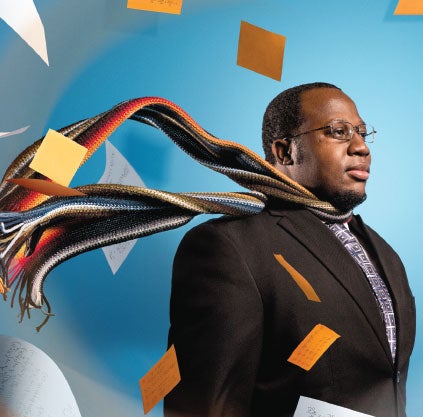Mention Hurricane Katrina and most people recall exactly where they were when that historic storm made landfall in 2005. Physics professor Gabe Williams certainly does. At the time, he was an undergraduate at Morehouse College in Atlanta. For Williams, Hurricane Katrina was a game changer.
“At that point, I was actually interested in astronomy,” Williams recalls, “but I saw the devastation of that storm firsthand. I saw all the human and social elements, which were awful and tragic. And, what I also saw – for the first time – was a lot of open discussion about hurricane formation and hurricane intensification. Everyone was talking about that storm. When you have a storm that intense, people talk a lot about it: just like Hurricane Andrew in Florida in ’92 and Hurricane Hugo here in Charleston in ’89. That’s what Hurricane Katrina was for my generation.”
Williams found himself engrossed in the myriad information available about Katrina – especially with a number of field experiments that were examining the structure of hurricanes.
“A tremendous amount of data was available online because so many scientists were looking at this problem,” he says. “That piqued my interest, and I realized that I had a good background to get involved. Because I was a physics and math major, I already had the tools in place.”
Fast forward – past his graduate school days and his dissertation on Hurricane Hugo – to today, and you’ll find Williams continuing his studies on the structure of hurricanes as an atmospheric physicist.
“In my field, you either work on the operational side,” he says, “which includes forecasting and analyzing weather maps, or you examine the physics of the atmosphere. That’s what I do: I try to understand the forces that act on hurricanes and how energy is distributed within a storm.”
Williams’ work involves examining data acquired principally by hurricane-hunting aircraft that actually fly into and around active storms.
“I’m particularly interested in understanding eye-wall formation and disintegration,” Williams says. “Hurricane scientists are very adept at determining a given storm’s track, but we don’t do as well in forecasting the changes in intensity. My goal is to better understand storm structure as a means of determining changes in intensity – and that starts with the eye wall.”
Though he refers to himself as a theoretical physicist, there’s a good deal of practicality to Williams’ work.
“The only reason to study science is if you believe that it actually serves humanity in some way,” he offers. “I chose this path not because I was a physics nerd interested in this topic, but because I actually saw the impact of Katrina. For me, the whole question of discovering more about the structure of these storms is that you have the potential to improve hurricane forecasting.”
At least that way we’ll know exactly where not to be the next time a historic storm makes landfall.




